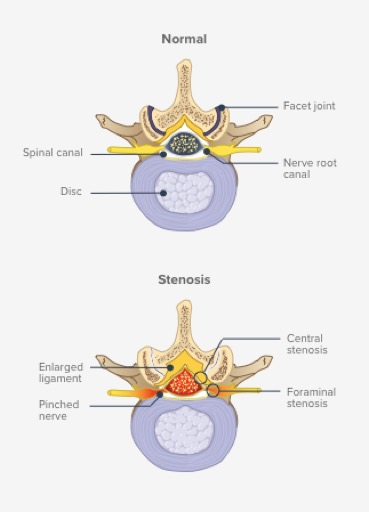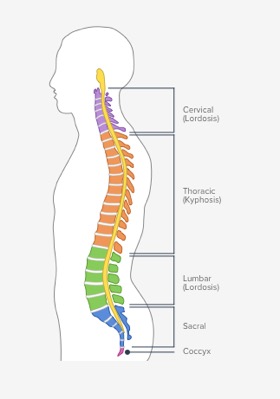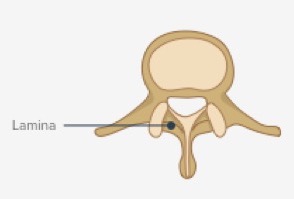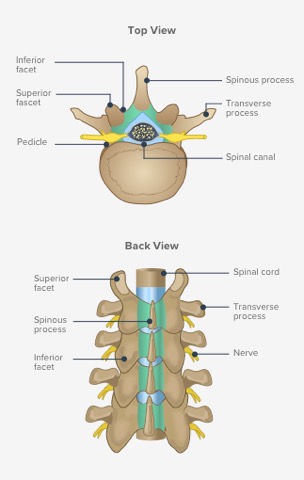Spinal Stenosis
What Is Spinal Stenosis?
Normally, the spinal channel is wide enough for the spinal cord, and the foramen are wide enough for the nerve roots. But either or both can become narrow and cause spinal stenosis.
Spinal stenosis may affect the cervical, thoracic, or lumbar spines. The most common area affected is the lumbar spine followed by the cervical spine.

The Spine
Understanding your spine can help you better understand some of the problems that can occur from aging or injury.
The spine is made up of 33 small bones, called vertebrae, which are stacked one on top of one another. Muscles, ligaments, nerves and intervertebral discs are also parts of your spine. This spinal column holds up your head, shoulders, and upper body, allowing you to stand upright, bend and twist. It also protects your spinal cord.
Parts of the Spine
Vertebrae: Your spine is made up of small bones, called vertebrae, which are stacked on top of one another and create the natural curves of your back.
The vertebrae are divided into regions. Only the top 24 bones are moveable. The following are the regions of the spinal vertebrae:
Cervical: Seven small vertebrae that begin at the base of the skull and end at the upper chest
Thoracic: 12 vertebrae that start from the upper chest to the middle back and connect to the rib cage.
Lumbar: five larger vertebrae that carry more of the body’s weight.
The vertebrae connect to create a canal that protects the spinal cord. A vertebra consists of a cylindrical body in front and a bony ring in the back.

Intervertebral Discs
In between these vertebrae are discs that act as cushions and shock absorbers. These intervertebral discs prevent the vertebrae from rubbing together and allow you to do high impact activities like running and jumping without pain.
They are flat and round, and about a half inch thick, made up of two components:
- Nucleus pulposus: The nucleus pulposus is jelly-like and makes up the center of the disc. This substance is partly made of water and gives the disc flexibility and strength.
- Annulus fibrosus: This is the flexible outer ring of the disc. It is made up of several layers, similar to elastic bands.allow rotation of the spine and may develop arthritis, a source for lower back or neck pain.
Lamina & Spinous Processes
At the back of each vertebra, you have the lamina, a bony plate that protects your spinal canal and spinal cord. Your vertebrae also have several bony tabs that are called spinous processes, attachment points for muscles and ligaments.

Spinal Cord & Nerves
The spinal canal goes down the middle of each vertebra. Your spinal canal houses your spinal cord, nerves, and ligaments. The spinal cord is about 18 inches long and is the thickness of your thumb. 31 pairs of spinal nerves branch off the spinal cord. Those nerves exit the spine through openings called the foramen and travel to all parts of your body.
The spinal nerves act as telephone lines, carrying messages back and forth between your body and spinal cord to control sensation and movement.
Facet Joints
Between the back of the vertebrae are small joints that help the spine move. These joints have a cartilage surface, much like a hip or a knee joint. The facet joints allow rotation of the spine and may develop arthritis, a source for lower back or neck pain.

Follow Us
Request An Appointment
Address: 3273 Claremont Way, Ste. 201, Napa, CA 94558
Phone: 707-603-1042
